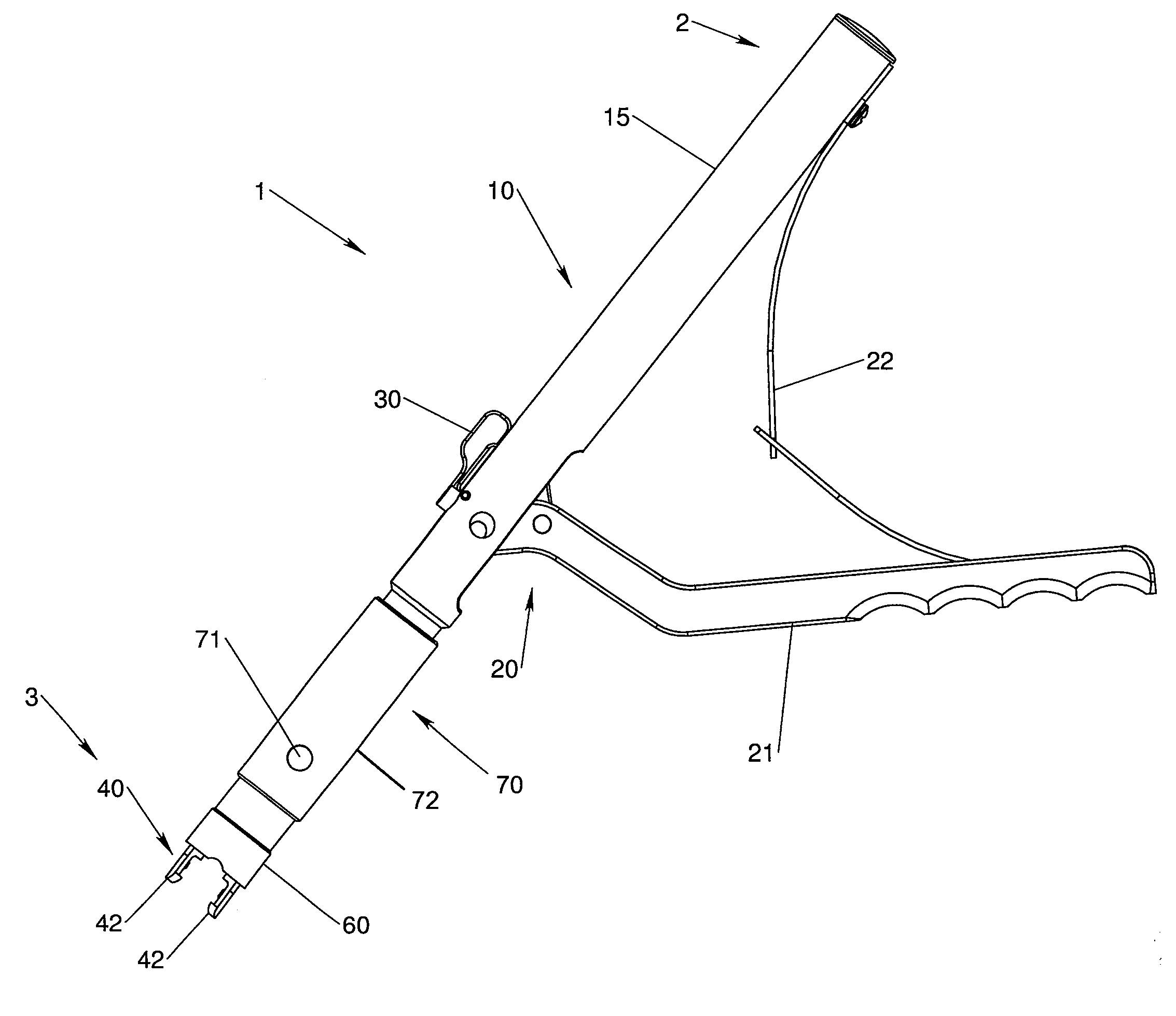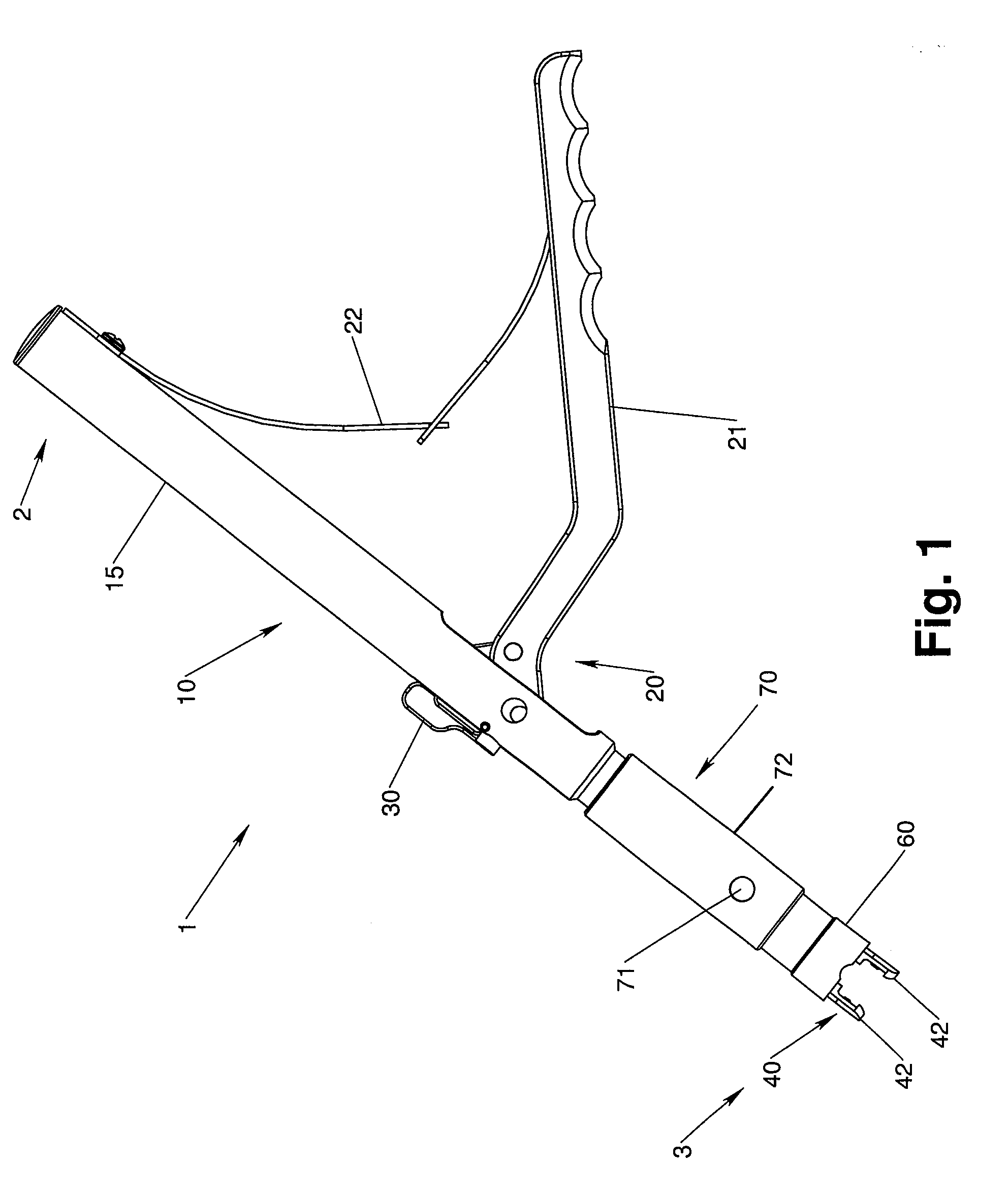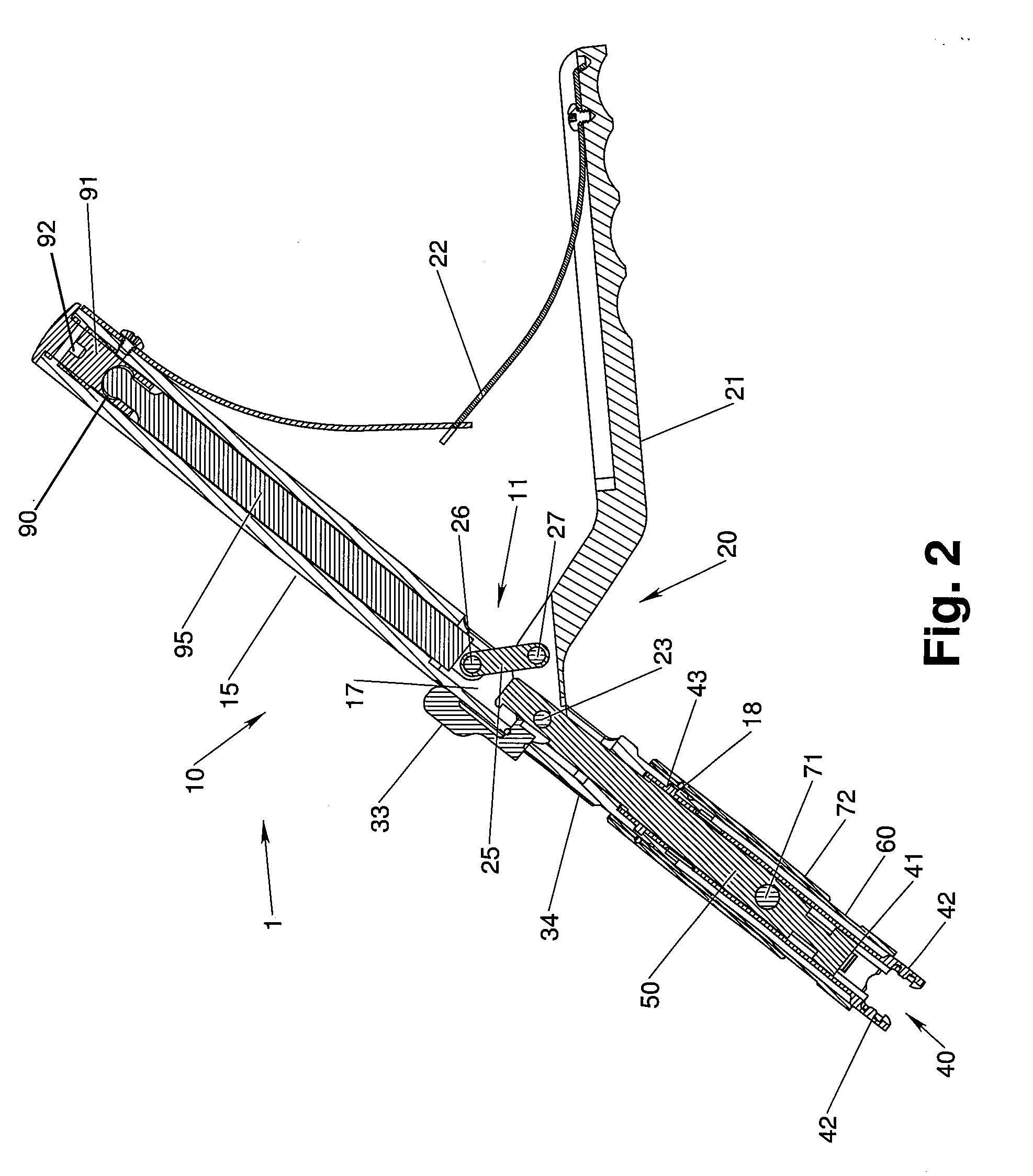Rod Locking Instrument
- Summary
- Abstract
- Description
- Claims
- Application Information
AI Technical Summary
Benefits of technology
Problems solved by technology
Method used
Image
Examples
Embodiment Construction
[0057]One exemplary instrument for securing a rod and an anchor member within a coupling assembly is shown in FIGS. 1 and 2. The illustrated embodiment comprises an instrument body 10 having a handle 15, an actuator assembly 20 having an actuator in the form of a lever 21, a radially expandable grasping device 40 extending axially from the instrument body, an axially shiftable drive member 50 extending from the instrument body and disposed within the grasping device, a reducing member in the form of a reducing sleeve 60 surrounding the grasping device and axially moveable with respect thereto, and a drive coupler 70 having a coupling sleeve 72 and a coupling pin 71. The coupling of the drive member 50 to the reducing member 60 and drive coupler subassembly 70 is illustrated by the side cross-sectional view of FIG. 3. The components of the instrument 1 are shown disassembled in FIG. 4 for reference in the following discussion.
[0058]An exemplary coupling assembly of the type that may ...
PUM
 Login to view more
Login to view more Abstract
Description
Claims
Application Information
 Login to view more
Login to view more - R&D Engineer
- R&D Manager
- IP Professional
- Industry Leading Data Capabilities
- Powerful AI technology
- Patent DNA Extraction
Browse by: Latest US Patents, China's latest patents, Technical Efficacy Thesaurus, Application Domain, Technology Topic.
© 2024 PatSnap. All rights reserved.Legal|Privacy policy|Modern Slavery Act Transparency Statement|Sitemap



